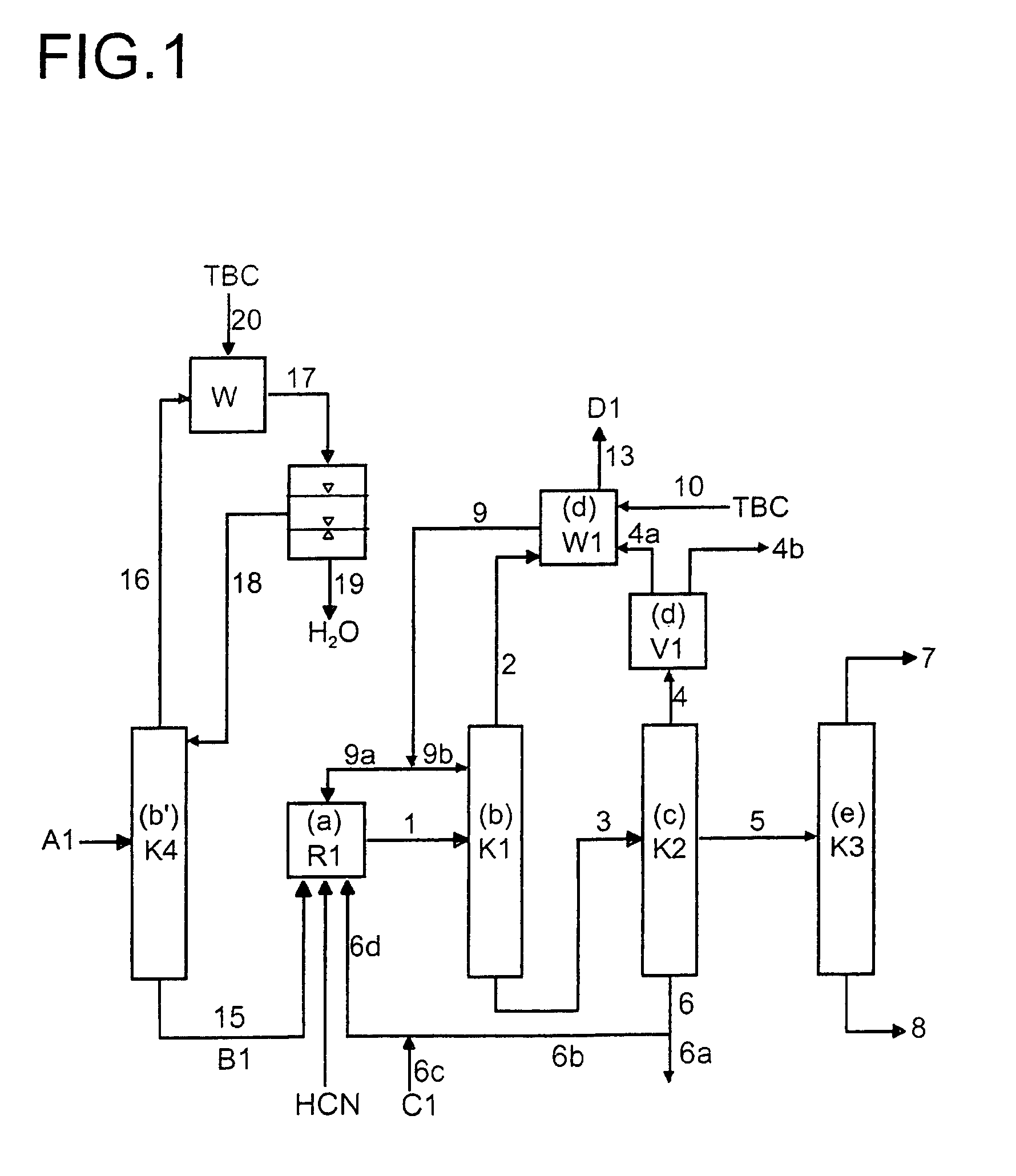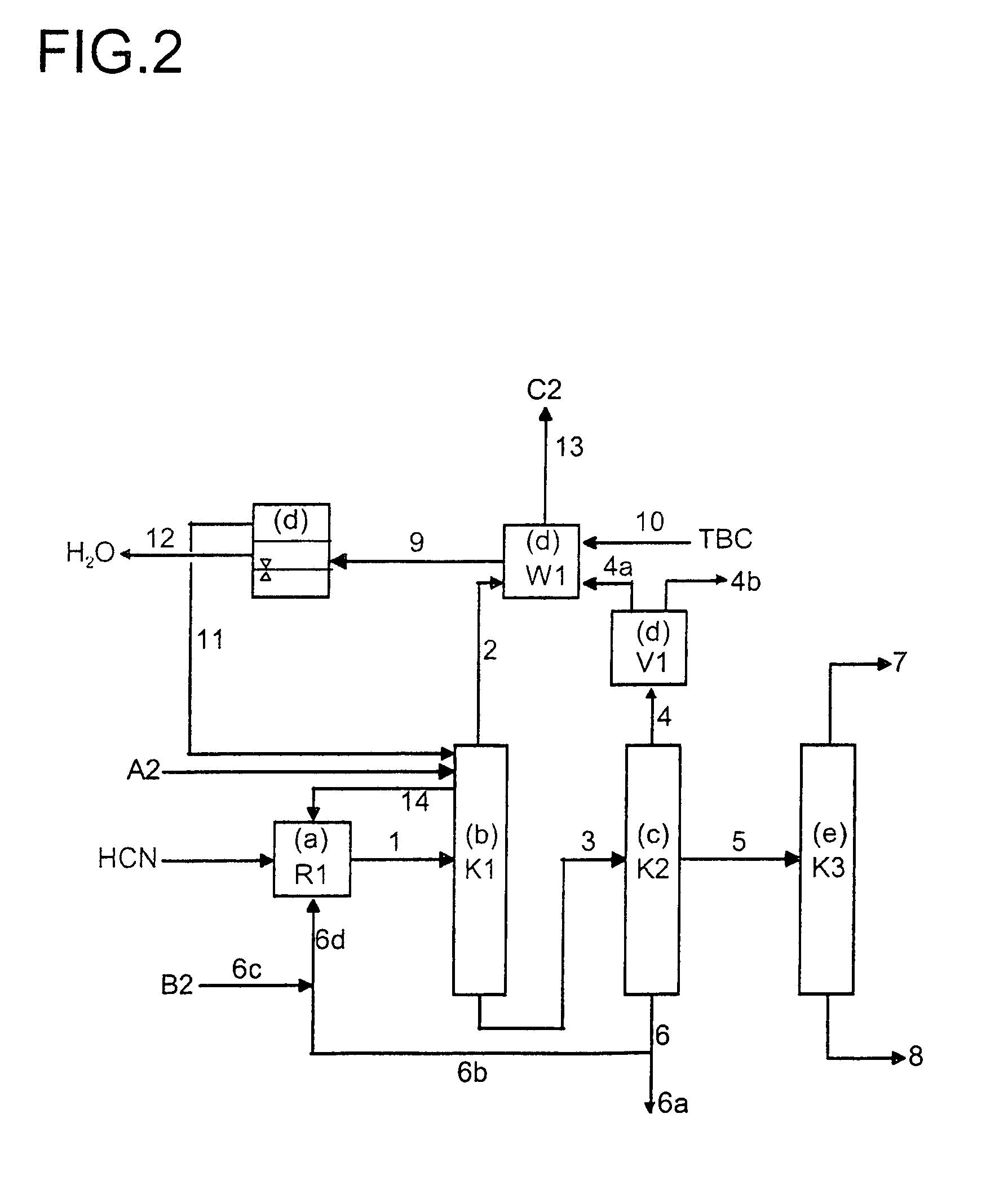Method for producing 3-pentenenitrile by means of the hydrocyanation of 1,3-butadiene
- Summary
- Abstract
- Description
- Claims
- Application Information
AI Technical Summary
Benefits of technology
Problems solved by technology
Method used
Image
Examples
Embodiment Construction
[0024]In a preferred embodiment, the stream 6 obtained in step c) is divided into a recycle stream 6b and a discharge stream 6a. In a particularly preferred embodiment, a stream 6c which comprises fresh catalyst and, if appropriate, regenerated catalyst from stream 6a is added to stream 6b. The stream 6d thus obtained is used as the catalyst feed in process stage a).
[0025]The fraction which has been referred to above as the predominant portion of the 1,3-butadiene from stream 1 and is removed with stream 2 relates to a proportion of preferably more than 50%, more preferably more than 60%, in particular more than 70%, of the 1,3-butadiene which is present in stream 1. The 1,3-butadiene from stream 1 which correspondingly remains is transferred via stream 3 into process step (c).
[0026]Process step (b′) serves for the dewatering of the 1,3-butadiene which also comprises 1- and 2-butenes and a stabilizer. This dewatering is based on the fact that butadiene and water form a heteroazeotro...
PUM
 Login to View More
Login to View More Abstract
Description
Claims
Application Information
 Login to View More
Login to View More - R&D
- Intellectual Property
- Life Sciences
- Materials
- Tech Scout
- Unparalleled Data Quality
- Higher Quality Content
- 60% Fewer Hallucinations
Browse by: Latest US Patents, China's latest patents, Technical Efficacy Thesaurus, Application Domain, Technology Topic, Popular Technical Reports.
© 2025 PatSnap. All rights reserved.Legal|Privacy policy|Modern Slavery Act Transparency Statement|Sitemap|About US| Contact US: help@patsnap.com



